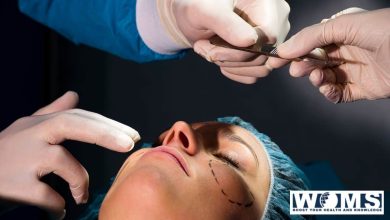Evolution of Breast Implants: Changes and Considerations Over Time

Breast implants are medical devices inserted into the breast to increase their size and enhance their general shape. Patients began to seek out breast augmentation procedures in the second half of the 20th century. However, they did not become as well known and popular as they are today until the late 1980s and 1990s. At this point, many celebrities began to have boob jobs and eventually breast augmentation became a surgery that the general public could get and seek out.
Modern breast implants do differ from the ones used in earlier decades. Today’s breast implants use a more cohesive silicone gel filling, are less likely to rupture, and are safer than any other previous type of breast implant. They are also designed to last longer in fact multiple manufacturers offer lifetime warranties—and usually can last several years and sometimes even multiple decades. However, as you and your implants age, there are changes that occur with the implants which patients should consider and be aware of.
Changes in Breast Implants Over Time
One of the most common changes a woman is likely to see in her breast implants is their positioning. No matter a woman’s lifestyle, the breasts will eventually begin to sag. There are several factors involved in this change. Firstly, the production of collagen and elastin declines as we age. These two proteins help keep the integrity and elasticity of the skin. As this decreases, skin all over the body will see changes, including possible sagging.
Additionally, if a woman has children after breast augmentation Bellevue surgery, she may see breast sagging. This occurs due to the rapid change in the size of the breasts seen during pregnancy and nursing. When the breasts finally begin to return to their original size, there may be significantly more skin than breast tissue. Thus, causing the breasts to sag.
In turn, this can cause the implants to sag, even if they are placed below the pectoral muscle. A breast lift surgery can resolve this and remove the extra skin. In some cases, the implants are simply shifted like the natural breast tissue because breast lift surgery does not go beneath the muscle where most breast implants today are placed. However, in some cases, a breast revision may be performed which can address the sagging as well as replace or remove the breast implants.
Deflation and Rupture
Deflation and rupture of the implants are likely two of the most dreaded complications associated with breast implants. Luckily, they are rare, especially with modern implants. Deflation only occurs with saline breast implants. If a rupture occurs, the saline filling will leak and cause the breast to deflate back to its original size and shape. Therefore, a rupture in a saline breast implant is usually noticeable within 24 hours.
Silicone breast implants may rupture and the patient will not know. However, the cohesive silicone filling is less likely to leak out of the shell. Thus, a rupture may not be immediately evident. With the new thicker filling though, ruptures in silicone implants are rarely emergencies, but do require prompt action once a patient becomes aware of it.
Some of the causes of deflation and rupture can include
- General wear and tear
- Older breast implants
- Injury or trauma to the chest or nearby structures
- Puncture of the implant during surgery
- Capsular contracture
With silicone implants, a rupture may have no symptoms. Though, in some cases, patients may notice their breast feels harder than it should or becomes misshapen or malpositioned. Depending on the cause of the rupture, patients may experience pain in the area that does not fully go away. To detect “silent rupture” of silicone breast implants, breast augmentation Bellevue patients are advised to get an MRI at least every three years.
Dealing with Asymmetry
Everyone’s breasts have some degree of asymmetry. Normally, it is mild and not easily noticeable. Sometimes after a breast augmentation surgery, patients may notice existing asymmetry more or new asymmetry may occur. Initially, in the months following surgery, some asymmetry is normal. Both breast implants are unlikely to drop at exactly the same time and swelling may take longer to go down in one breast versus the other. Therefore, it is difficult to get a true reading of asymmetry in the final result until about a year after surgery.
There are various possible causes of asymmetry in the final result
- The implants accentuated existing asymmetry
- Malpositioning of one or both implants
- Implant movement
- Capsular contracture
- Internal pocket failure
Normally, noticeable asymmetry resolves on its own with the healing process. However, for patients who have seen continued asymmetry, breast revision may be an option. The surgery can replace the implants, repair the internal implant pocket, reposition the implants, and resolve capsular contracture. It is not an overly common cause for breast revision.
Factors Affecting Implant Aging
Breast implants will age no matter how good the patient’s lifestyle. However, there are few factors that impact the potential longevity of breast implants
- Smoking
- Pregnancy
- Major weight fluctuations
- Genetics
- Autoimmune disorders
- Amount of physical activity
- Risky physical activity
It is not surprising that a patient who boxes or has a higher risk of chest injury may see their implants not last as long if this occurs. Additionally, smoking can hinder the healing process of breast augmentation Bellevue surgery. It can also cause the skin to sag worse and earlier compared to those who do smoke.
Pregnancy—while not inherently negative to the results of breast augmentation—can cause changes in the appearance of breast implants. Depending on the specifics, there could be a small chance that multiple pregnancies affect the general aging of implants.
Maintenance Tips for Longevity
While not fully in your control, there are some things you can do to promote the longevity of your breast implants
- Follow post-op instructions
- Wear surgical bra until okayed to switch
- Get regular MRIs based on your implant type and surgeon’s recommendations
- Avoid activities that could result in chest injury or increased pressure on the chest
- Maintain a healthy lifestyle
- Avoid major weight fluctuations if possible
- Regularly follow up with your surgeon
- Monitor breasts for changes in shape
- Undergo ultrasound lymphatic massage during recovery
- Do not return to activities before okayed
Conclusion
Breast implants will age and change overtime. While this can be extremely minimal, it can also put patients at a higher risk of experiencing implant rupture or unwanted cosmetic changes. Today’s implants are designed to last longer than ever, but patients should still be diligent in protecting the integrity of their breast implants.
Patients interested in breast augmentation bellevue should consult with an experienced plastic surgeon to understand what they can expect from their breast augmentation results.
Author Bio
Dr. Ludwig Allegra
Dr. Ludwig Allegra has been delivering top-notch plastic surgery services to Bellevue, Kirkland, and nearby regions for more than twenty years.




